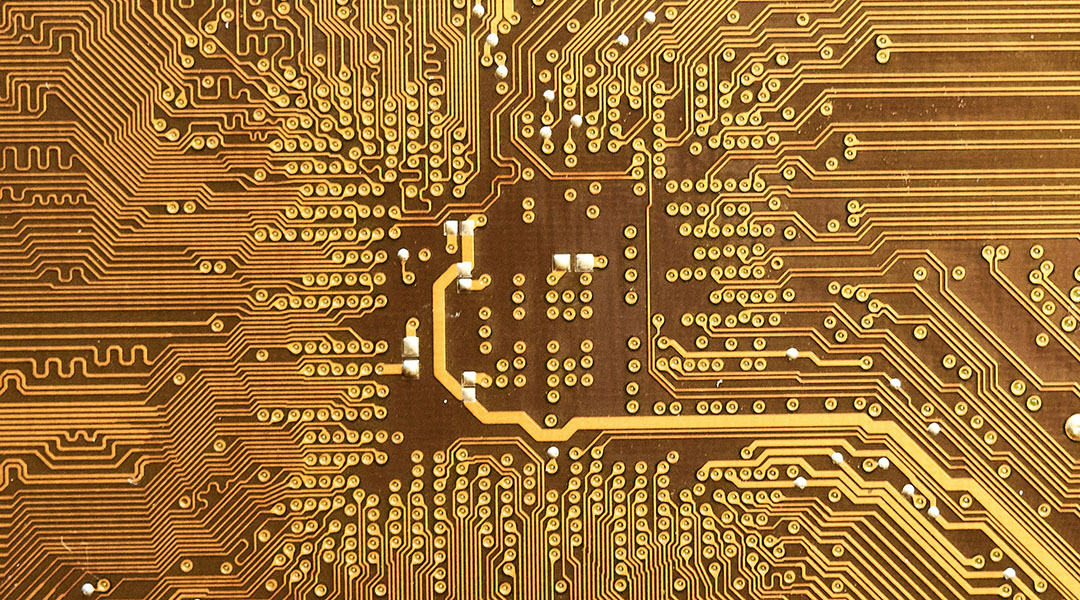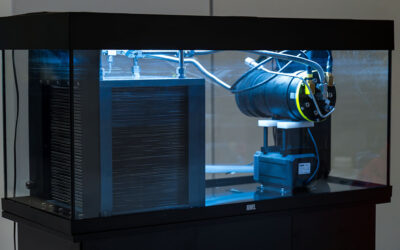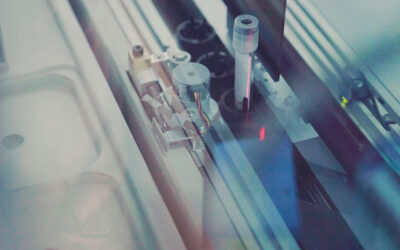New research proposes a new sensor coating or “e-skin” for robots that could help machines working in close contact with humans reduce the danger of collisions.
Robots are becoming an increasingly more significant factor in our lives, both in industry and in our homes. This means an increasing number of us are sharing tight spaces with moving machines. Thus, this deeper collaboration between human and machine requires improvements in safety measures that don’t impact the efficiency of these robots.
In environments where humans and machines collaborate closely, robots need to be able to perceive collisions and judge the intensity of these clashes just like humans do. We do this by feeling pain with our skin and taking protective measures to avoid more severe accidents by quickly adjusting our bodies. The team applied this same logic when creating an e-skin for robots that allows them to mimic these damage-limiting actions, detailing their creation in a new paper published in the journal Advanced Intelligent Systems.
“The demand for robots and robotic devices is rapidly increasing in modern life, where human-robot collaboration is becoming more important. However, human-robot joint work may cause accidental collisions, especially for large movements in a relatively narrow workspace. A critical challenge is how to ensure safety and prevent such collisions from causing harm to humans,” said team member Fan Shi of the Hong Kong University of Science and Technology. “E-skins are sensor systems that can be installed on a robot’s body. Like human skin, they can immediately detect collisions when contact occurs, estimate the location and energy of the impact, and guide the robot to take real-time action to minimize the damage of the collision.”
An e-skin that is a cut above
Fan Shi explained that current mainstream e-skins rely on flexible electronics technology. A major issue with this approach is that the materials are expensive, and the manufacturing processes are not yet mature. Additionally, to cover a large sensing area while ensuring satisfactory resolution, current e-skins require a large number of sensors. This further increases the cost of e-skins, thus making large-scale adoption difficult.
To develop a new e-skin that avoids these limitations, the team took inspiration from Kirigami, a Japanese paper-cutting art form that involves cutting and folding paper. Kirigami transforms a flat sheet of paper into a three-dimensional design, often with an intricate and elaborate structure.
“We have developed a new e-skin based on a fusion of ultrasonic detection, sensing, and machine learning, incorporating the concept of Kirigami design,” Fan Shi said. “By using mature industrial sensors, circuit board designs, and the advantage of broad coverage of ultrasonic guided waves, this technology significantly reduces costs and is expected to be deployed in the mass market.”
While ultrasonic detection and machine learning aspects of the e-skin create an innovative sensing method, the Kirigami design allowed the team to extend a small flexible circuit board over a larger area.
“Besides, we make use of ultrasonic signals guided by structural features of robots, which enables 100% coverage with very few sensors,” Fan Shi explained. “Machine learning algorithms are utilized to interpret the sensing signals for collision localization. The integration of the above methods leads to real-time response, highly accurate collision detection, wide-sensing coverage while greatly reducing production costs.”
This kept the cost of the e-skin below $5, which the team hopes will help facilitate its large-scale adoption in the robotics industry. Of course, being economical is only advantageous if the system is effective in its role.
“We built a test setup capable of applying precise collisions, then using this setup, we collected thousands of random collision data samples to train a neural network,” said Fan Shi. “We then compared the neural network’s calculated collision results with the precise collisions applied by the equipment to assess the accuracy of the e-skin.”
Additionally, the team installed their e-skin on a commercial robotic arm to evaluate its overall performance when integrated into a complete robot system.
“The collision detection accuracy and response speed of this e-skin exceeded the initial expectations,” said Fan Shi.”After data training, this e-skin achieved millimeter-level collision detection accuracy and response times of just tens of milliseconds, which is beyond our expectations. Its capabilities are now very close to meeting the demands of real-world applications.”
The team now plans to further optimize the e-skin’s design and boost the corresponding software to improve collision detection response time and accuracy. Additionally, the team is seeking industry partners to collaborate with on targeted research and development for specific applications of their e-skin.
“We believe that large-scale deployment could be achieved within 2 to 3 years as long as we find the right users,” Fan Shi concluded.
Reference: R. Jiao., Z. Wang., R. Wang., et al., Deep Learning Based Large-Area Contact Sensing for Safe Human–Robot Interaction Using Conformal Kirigami Structure-Enabled Robotic E-Skin, Advanced Intelligent Systems (2025). DOI: 10.1002/aisy.202400903
Feature image credit: Unsplash

















